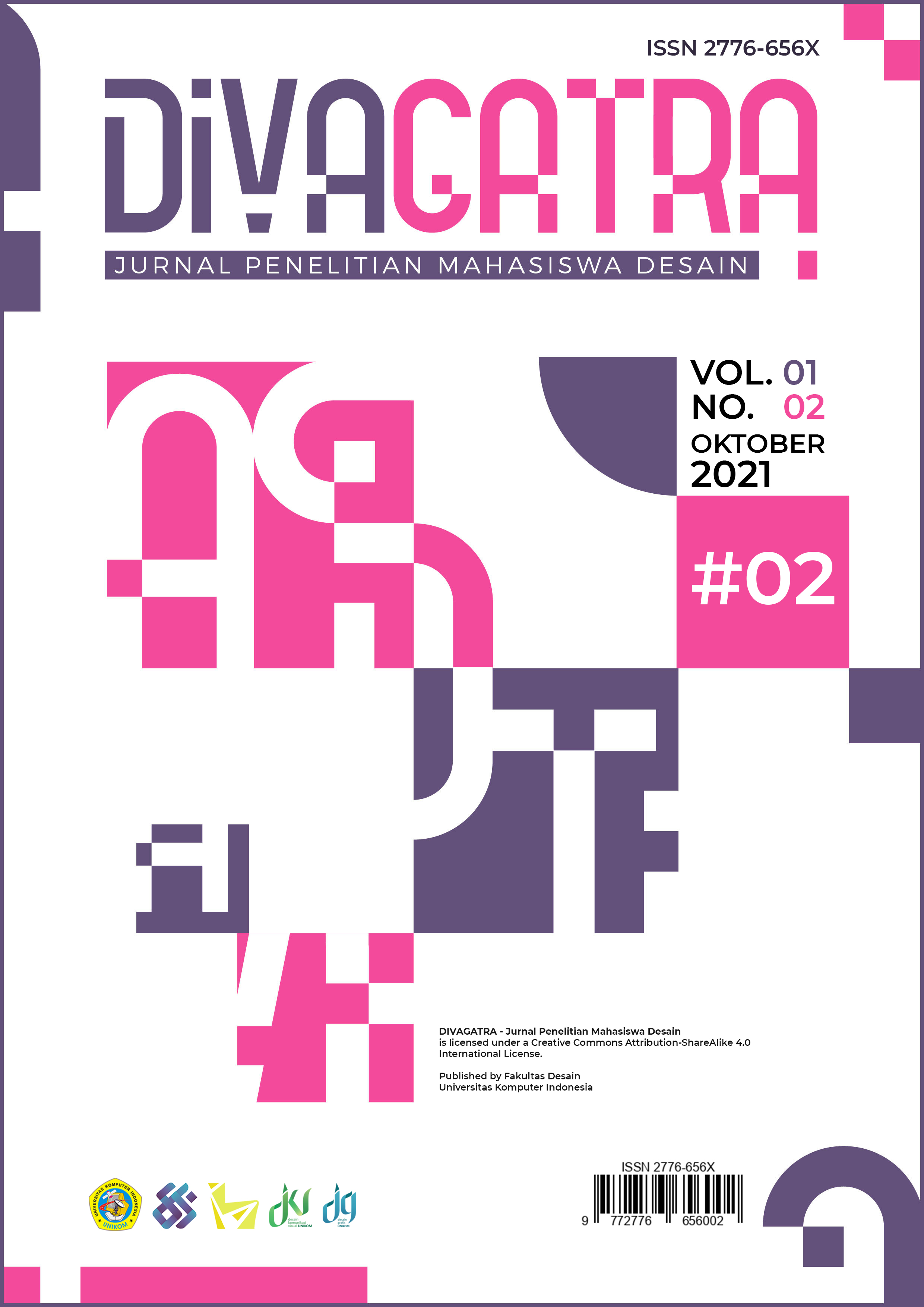Board Game Pengenalan Pasukan Elite Kerajaan Majapahit
Main Article Content
Abstract
The Majapahit Empire was a very succeeded empire in the 13th century, the Majapahit Empire was famous with best peoples on conquering a country, as evidenced by the invasion carried out by Majapahit by expanding territory to Vietnam. At time of the Empire, Majapahit had elite troops like the current KOPASSUS troops which became a feared force in Asia and in the world. The elite troops of the Majapahit Empire were called the Bhayangkara troops. The design of information in the introduction of the elite troops of the Majapahit Empire, that is Bhayangkara, uses an interesting and educational concept, because this design aims to provide information in a fun way to increase students interest in studying history. The visual style used is a cartoon drawing style so that the design is attractive to students and also inserts elements of history and tradition. The visual creations in this design take from several historical relics such as statue, reliefs, paintings, weapons, objects from the Majapahit Empire and the Mongols.
Article Details
Section
![]()
Authors who publish articles in DIVAGATRA agree to the following terms:
- Authors retain the copyright of the article and grant the journal right of first publication with the work simultaneously licensed under CC-BY-SA or The Creative Commons Attribution–ShareAlike License.
- Authors can enter into separate, additional contractual arrangements for the non-exclusive distribution of the journal's published version of the work (e.g., post it to an institutional repository or publish it in a book), with an acknowledgment of its initial publication in this journal.
- Authors are permitted and encouraged to post their work online (e.g., in institutional repositories or on their website) before and during the submission process, as it can lead to productive exchanges, as well as earlier and greater citation of published work (See The Effect of Open Access).
How to Cite
References
Ahmad, A. (2016). Sejarah Kontroversial Di Indonesia: Perspektif Pendidikan. DKI Jakarta: Yayasan Pustaka Obor Indonesia.
Hadiwijono, H. (2008). Agama Hindu Dan Budha. Solo: PT. BPK Gunung Mulia.
Hariadi, K. (2009). GAJAH MADA; Gajah Mada: Bergelut dalam kemelut takhta dan angkara, Volume 2. Solo: Penerbit Tiga Serangkai Mandiri.
Hendarsah, A. (2010). Cerita Kerajaan Nusantara. Yogyakarta: Penerbit Jogja Great! Publisher.
Iskandar, M. S. (2007). Aplikasi Periklanan Menggunakan CorelDraw X3. DKI Jakarta. PT. Elex Media Komputindo.
Lewis, M. (2018). Creating Stylized Characters. United Empire: 3dtotal Publishing.
Komandoko. G. (2009). GAJAH MADA; Menangkis Ancaman Pemberontakan Ra Kuti. Yogyakarta: Penerbit NARASI.
Muljana, S. (2005). Menuju Puncak Kemegahan; Sejarah Kerajaan Majapahit. Yogyakarta: PT. LKiS Printing Cemerlang.
Neville, L. (2019). The Elite: The A–Z of Modern Special Operations Forces. United Empire: Bloomsburry Publishing Plc.
Putri, R. H. (2018). Kuno Awal Mula Kerajaan Majapahit. Dikutip dari https://historia.id/kuno/articles/awal-mula-kerajaan-majapahit-D8J4o (diakses: 25 April 2020)
Putri, R. H. (2019). Meninjau Kembali Wilayah Kekuasaan Majapahit. Dikutip dari https://historia.id/kuno/articles/meninjau-kembali-wilayah-kekuasaan-majapahit-PGpaB (diakses: 25 April 2020)
Prasetyo, D. (2009). Mengenal Kerajaan-Kerajaan Nusantara. Yogyakarta: Penerbit Pustaka Widyatama.
Raditya, I. N. (2018, 18 Desember). Sejarah Kerajaan Majapahit: Negara Besar yang Akhirnya Punah. Dikutip dari https://tirto.id/sejarah-kerajaan-majapahit-negara-besar-yang-akhirnya-punah-dccY (diakses: 25 April 2020)
Sihombing, D. (2017). Tipografi dalam desain Grafis. Jakarta: PT. Garmedia Pustaka Utama.
White, A.W. (2011). The Element of Graphic Design: Second Edition. New York: Allworth Press.
Widyaningrum, G. L. (2019, 16 Maret). Lima Fakta Tentang Majapahit, Kerajaan Terbesar di Nusantara. Dikutip dari https://nationalgeographic.grid.id/read/131666050/lim a-fakta-tentang-majapahit-kerajaan-terbesar-di-nusantara?page=all (diakses: 18 April 2020)

